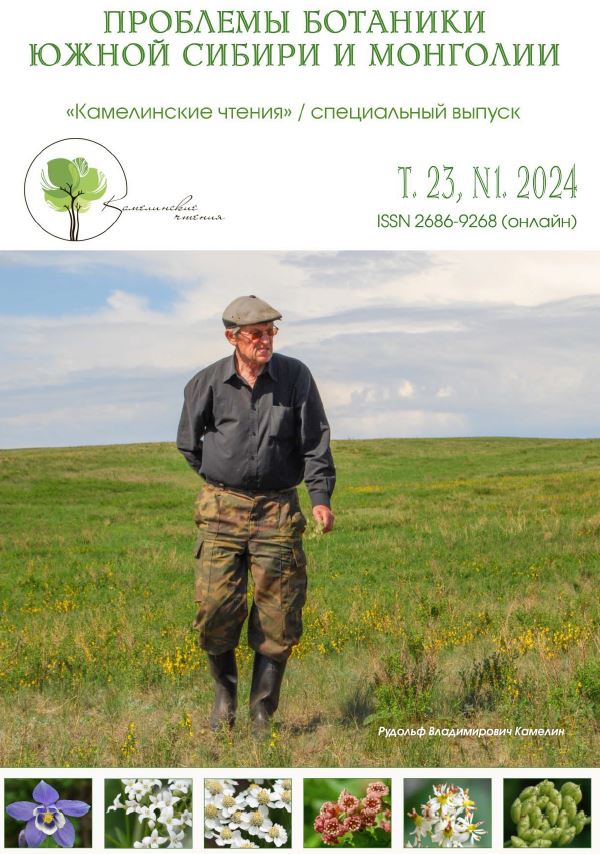Analysis of the partial flora of of steppe biotopes in the vicinity of the Karadag Nature Reserve
УДК 581.93+502.4(477.75)
Abstract
The analysis of the current state of the partial flora of steppe biotopes located southwest of the Karadag Nature Reserve, which are located on irregularly alternating elevations and depressions (which is typical for similar landscapes of this region). A total of 51 species of vascular plants were identified, which indicates a low taxonomic diversity. The most widely represented species are Brassicaceae (Barbarea vulgaris W. T. Aiton, Lepidium sp.), Asteraceae (Artemisia taurica Willd., Galatella villosa (L.) Rchb.) and Rutaceae (Ruta divaricata Ten.). In addition to herbaceous plants, woody forms (Pistacia atlantica subsp. mutica (Fisch. et C. A. Mey.) Rech. f.) and shrubs (Paliurus spina-christi Mill., Jasminum fruticans L.) are rarely found, which are generally widespread on the territory of the Karadag Nature Reserve. The low taxonomic diversity, as well as the high prevalence of species associated with ruderal types of communities, suggests that these biotopes are experiencing a pronounced anthropogenic load (in conditions of active development of this territory). Plant species rare for the region were not identified during the study.
Downloads
Metrics
References
Дидух Я. П., Вакаренко Л. П., Шеляг-Сосонко Ю. Р. Геоботаническая карта Карадага (Крым) как основа для изучения антропогенных сукцессий растительности // Геоботаническое картографирование, 1981. - № 1981. -С. -33.
Каменских Л. Н., Потапенко И. Л. О новых видах адвентивной флоры Карадагского природного заповедника // Экосистемы, 2012. - № 6(25). - С. 3-14.
Ким И. Г., Кузнецова Е. Ю., Сурова Н. А. Загрязнение среды Карадагского природного заповедника как фактор снижения биоразнообразия // Ученые записки Крымского федерального ун-та им. В. И. Вернадского. Биология. Химия, 2003. - № 3 (55). - С. 86-90.
Миронова Л. П. Некоторые аспекты в решении проблемы сохранения биологического разнообразия в Юго-Восточном Крыму // Заповедники Крыма на рубеже тысячелетий: Матер. республик. конф. (27 апреля 2001 г., г. Симферополь, Крым). - Симферополь, 2001. - С. 81-83.
Миронова Л. П. Памятник природы «Лисья бухта-Эчкидаг» в Юго-восточном Крыму на грани уничтожения // Заповедники Крыма - 2007. Часть 1. Ботаника. Общие вопросы охраны природы: Матер. IV международ. на-уч.-практ. конф., посвящ. 10-летию проведения международ. семинара «Оценка потребностей сохранения биоразнообразия Крыма» (Гурзуф, 1997) (2 ноября 2007 г., г. Симферополь, Крым). - Симферополь, 2007. - С. 322-328.
ФатерыгаВ. В., Фатерыга А. В. Дополнения к флоре сосудистых растений Карадагского заповедника (Крым) // Nature Conservation Research. Заповедная наука, 2019. - № 2. - С. 67-82.



